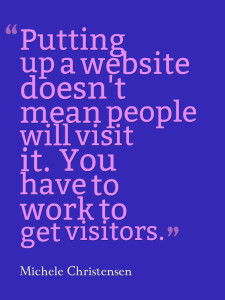 One of my big themes for 2014 is narrowing my focus, and one of the areas I’m focusing on is writing Kindle books. I’ve got two published and a third is in the works. One of my books even got to #1 Bestseller status in the Kindle store! In this post, I’m reviewing a Kindle book that has information I used to get my book to #1 Bestseller status:
One of my big themes for 2014 is narrowing my focus, and one of the areas I’m focusing on is writing Kindle books. I’ve got two published and a third is in the works. One of my books even got to #1 Bestseller status in the Kindle store! In this post, I’m reviewing a Kindle book that has information I used to get my book to #1 Bestseller status:
Author’s Quick Guide to Making Your Book a Bestseller
The book’s author is Kristen Eckstein, who is one of my Kindle mentors. I was in her first “Kindle in 30 Challenge” back in January, and from that I was able to get my series “The Solopreneur’s Success Strategy” started.
Here’s the review, in short form: Buy it. It’s well worth the $3.49 price point. If you are writing Kindle books that sell for $2.99, you only need to sell 2 to cover the cost of this book and I’m pretty certain this book will cause you to sell at least two additional books.
If you want more information, here’s the longer review.
Kristen’s credentials for writing this book are extensive and can be found in the beginning of the book. Suffice it to say, she knows her stuff. She covers many areas that will help you become a bestseller including writing a good book, choosing catagories, pricing, using keywords and writing for your specific audience.
One of the great things about this book is that much of what you will learn is applicable to other areas of your business as well. For example, she spends a lot of time on finding your audience and learning to speak their language. That skill is useful in so many areas of your business – when marketing on the web, when speaking from the stage, when creating products or when talking one-on-one with potential customers.
This book was hugely helpful to me and helped me get one of my books that coveted #1 status! My tip: Don’t forget to take a screenshot when your book gets to #1!
Check out the book here:
Author’s Quick Guide to Making Your Book a Bestseller
Like this post? Please use the Pin It and social sharing buttons below to let your connections know about it. Thanks!
Image source: Amazon.com







